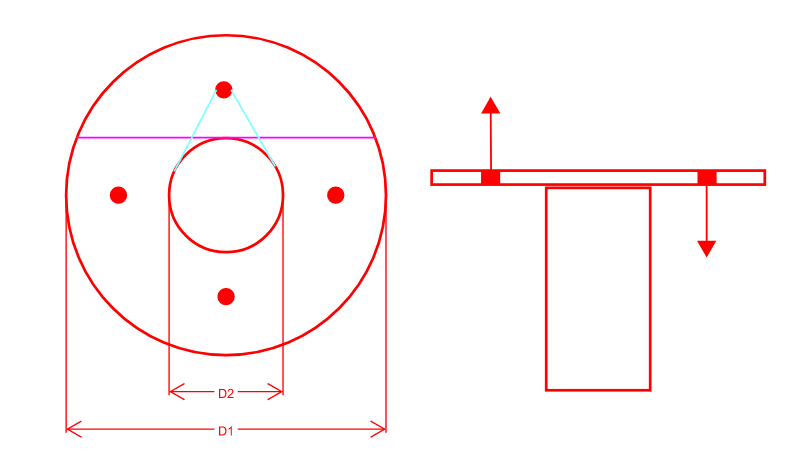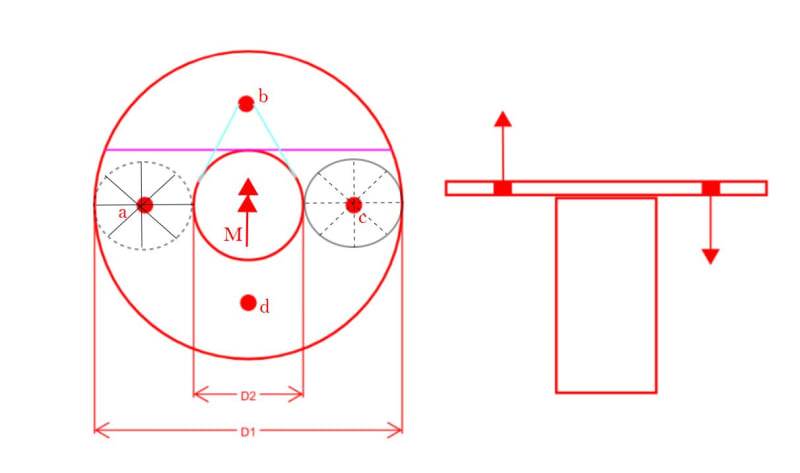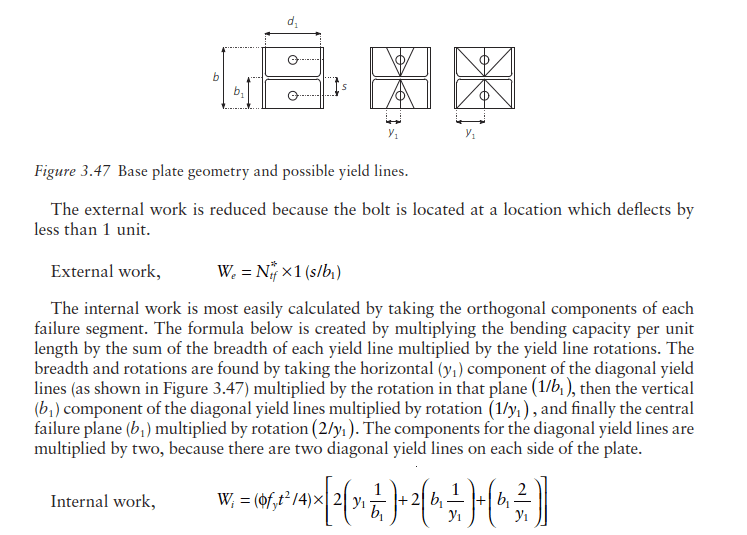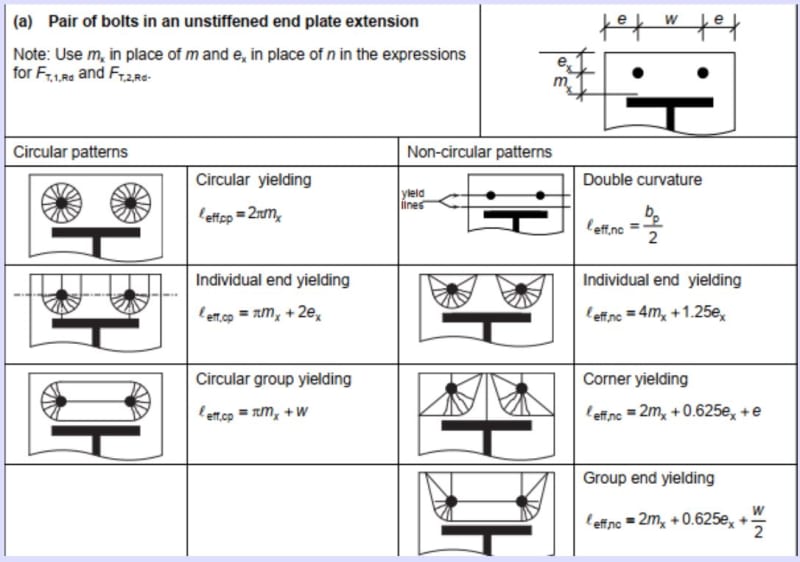& BA[/color]]Unfortunately, the piece of a equipment has only 4 bolts and is in a circular pattern.
For the effective length of the purple line, it's just simply the length of the purple line correct? Correct. However, I'm not understanding how to calculate the effective length to consider for the circular? Effective length of the circular yield line is pi*D(diameter). I understand the concept is taking the horizontal length divided by the rotation but I don't understand the "rotation" part. Each small triangle inside the circle rotates an amount theta when the bolt moves up or down. Internal work done = m*theta*pi*D, where m is the unit moment resistance of the plate. How would this concept relate to the circular yield line pattern you've noted above? Maybe I'm just stupid and not understanding a basic concept, but I really need help understanding this better.





